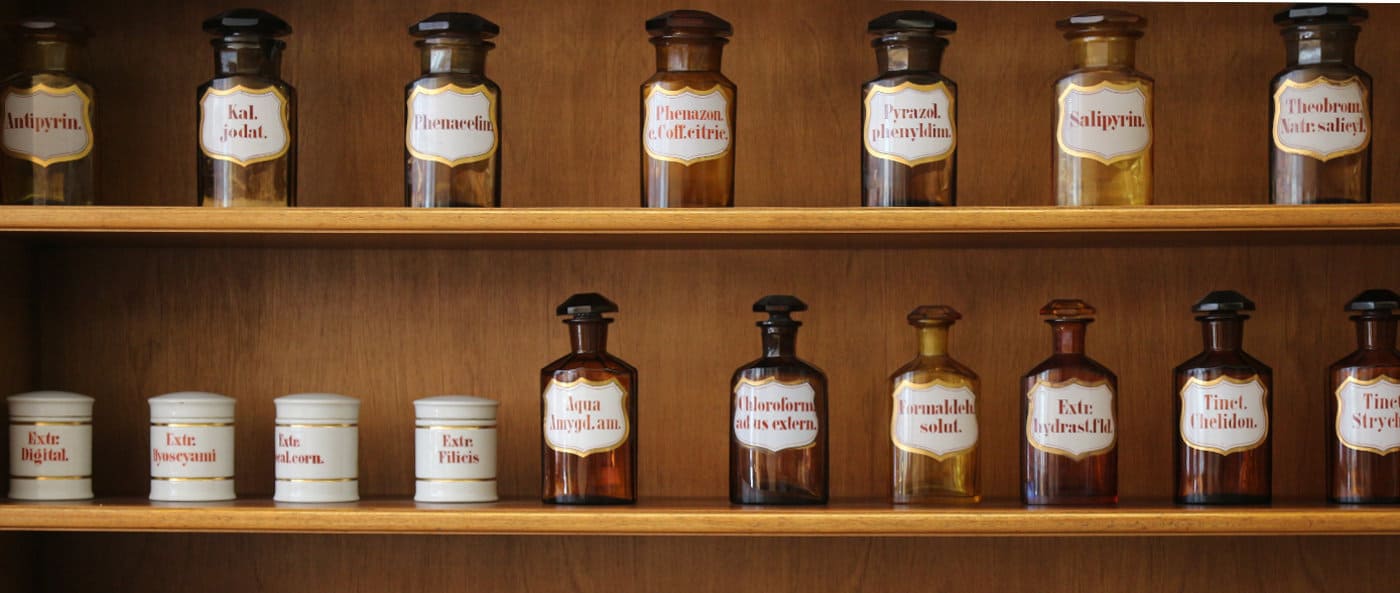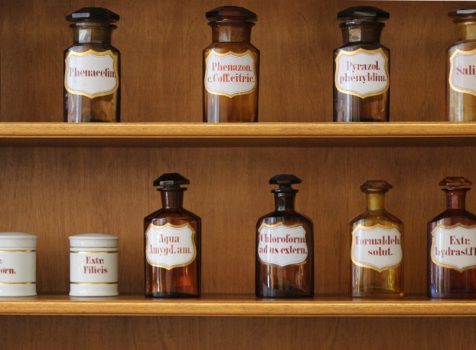Lugol’s Solution Iodine (Lugol’s solution, potassium iodide) can be used to strengthen the immune system, for disinfection and protection against free radicals, but also as a prevention and complementary treatment of breast cancer and other malignant diseases. It is one of the most important and cheapest drugs of our time!
Natural Iodine Sources
Iodine is an indispensable component of the animal and human organism and is taken in with nutrition. With humans, the highest concentration is in the thyroid gland where iodine is built into the hormones thyroxine and triiodothyronine. All soils, unrefined sea salt, most seafood (ocean fish, haddock, oysters), kelp and other algae, butter, pineapple, artichokes, asparagus, dark green vegetables and eggs contain iodine.
Yet fish alone cannot cover the need of iodine. To obtain the 13,8 milligrams of iodine that we are in need of, 11-23 pounds of fish were required to be consumed.
Lack of Iodine
Iodine is being stored in the thyroid gland and in tiniest proportions in every cell where it is constantly used, emitted to the blood in order to cope with multiple tasks. Every 17 minutes the entire blood flow passes through the thyroid gland where it is provided with iodine. Only with a sufficient iodine level the thyroid gland and the cells can fulfill their many duties. Additional to a constant usage of iodine there are further main causes for the loss of iodine, such as halogens like chlorine in drinking water or in pools, and fluorine (in water or tooth paste) as well as bromine.
Too much natrium chlorine (refined salt) and heavy metals such as mercury, lead, cadmium or alloy oust iodine. Environmental pollution as well generally leads to a lack of iodine as it is ousted in the body. That explains why our iodine level has dropped by about 50 per cent during the last 30 years. The more of the above mentioned iodine consuming factors occur, the more iodine must be supplemented from outside. Most people do not get enough iodine and the levels usually recommended are far too low!
Tasks and Effects of Iodine
- Creates health-relevant hormones, in first place the thyroid hormones Thyroxin (T4) and Triiodthyronin (T3)
- Takes care of energy makeup and regeneration, gives the daily life buoyancy.
- Soothens the body, dissolves nervous tensions (reduces crankiness, switches to calmness, improves sleep) – thus allowing for building and storage of new power reserves.
- Generally enhances resistibility, enforces the immune system against diseases – especially important with all kinds of radioactive influences!
- Is a potent antioxidant (a radical inhibitor), neutralizing many bad free radicals and their chain reactions.
- Augments the excretion of bromine, fluorine, chlorine and some heavy metals including mercury and lead. Bromine and fluorine can only be neutralized and excreted by iodine. Iodine is the only option to remove toxic fluorine, chlorine and bromine from the thyroid gland, where fluorine concentrates.
- Supports essential functions in the regulation of metabolism- and development disorders.
- Is very efficient in decontamination, destruction of microbes, disinfection: anti-bacterial, immediately destroys weak but dangerous germs in the blood. Stronger germs, presumed sufficient iodine is there, are being weakened with every pass of the thyroid gland until they too die. Thus it cleans the blood in a way that all common infections vanish.
- Helps against infectious inflammations e.g. of the gum.
- Improves clear thinking, the intellect works better.
- Reduces fat by inducing oxidation and thus the burning of fat.
- Helps against thyroid hypofunction.
- Reduces a too strong cell growth (as is the case with cysts, knots, hyperplasia, cancer/tumors).
- Reduces the absorption and accumulation of radioactive iodine in glands and tissue (radioactive substances modify and destroy tissue).
The stock of iodine in our body is numbered 10 – 30 mg. Every day, Iodine is needed for the thyroid gland in microgram quantities, for the breast gland and other tissue even in milligram quantities.
Daily Need of Iodine
Specifications about what the entire daily supplementation with iodine should be vary considerably. Considering the above mentioned iodine consumers and the steadily rising pollution with toxins (e.g. chemicals) and radioactive particles the need of iodine continuously rises, too.
That is why the official data about the daily need for iodine should be registered with great skepticism. They generally might be too low and could be considered a disinformation policy to the disadvantage of health! The German Society for Nutrition (DGE) recommends a daily intake of 180-200 micrograms of iodine for adults, a little more for pregnant women and breastfeeding mothers. However, the guide values of the World Health Organization (WHO) are 150 – 200 μg for adolescents and adults.
According to Dr. Jarvis, a renowned iodine specialist, one to two drops per week of Lugol’s solution (6.5 – 13 mg) should be taken in, depending on the body weight. That means people with no more than 70 kilos only need one to two drops twice a week to any meal. Who weighs more should take two drops respectively. In times of stress or diseases in the environment Dr. Jarvis recommends one to two drops three times a week, with cancer, particularly breast cancer, one to two drops of Lugol’s solution daily.
But some recommend even higher doses, e.g. Michael B. Schachter, MD: “In order to compensate a lack of iodine, the amount is generally between 12.5 and 50 mg per day, that is, two to four drops.
Dr. Brownstein even administers 200 – 300 mg per day to prostate and breast cancer patients. Those with metastases require the highest doses. Many smaller doses scattered throughout the day are more effective than bigger doses in greater intervals. For therapeutic reasons iodine can be even administered in gram doses without bigger side effects.
Composition of Lugol’s Solution
5 % elementary iodine and 10 % potassium iodide solution, that makes a relation of 1:2. This recipe originates from the French doctor Jean Guillaume Auguste Lugol from 1880. This Lugol’s iodine solution has ever since been in use, however its great efficiency and high dosage have usually been concealed by doctors and pharmacists for commercial reasons.
Other labelings of the Lugol’s Solution: Lugolsche Solution, Iodine potassium solution, diluted Iodine-Potassium iodide solution (with concentration specification)
Latin: Solutio Lugoli, Solutio Iodi “Lugol”, Solutio Iodi aquosa, Iodi solutio aquosa, Solutio Jodeti kalici cum Jodio
French: Solution de Lugol
Italian: Soluzione del Lugol per cento
High Potency Iodine Supplement and Supplying Elemental Iodine


